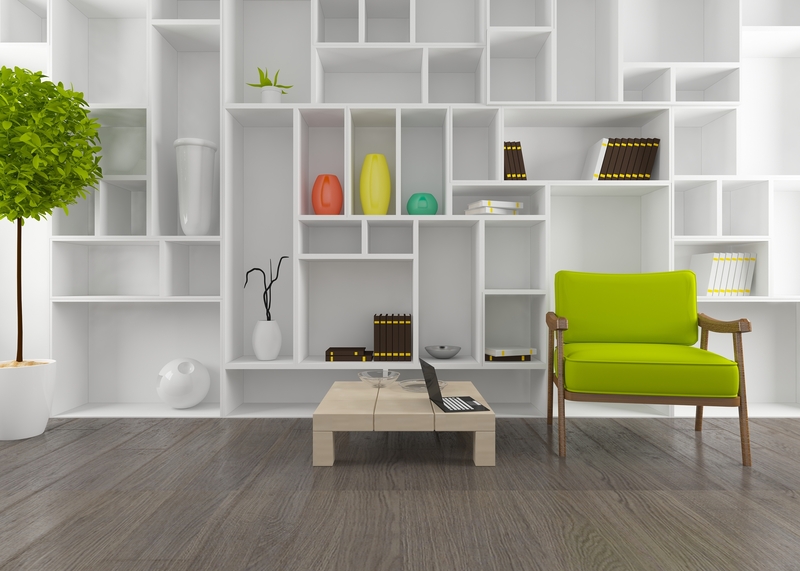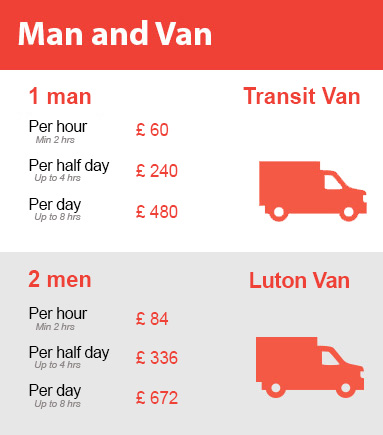Moving Your Bed and Mattress with Ease
Posted on 21/06/2025
Moving Your Bed and Mattress with Ease: The Ultimate Guide
Relocating to a new home can be overwhelming, especially when it comes to transporting large and delicate items like your bed and mattress. Whether you're a student moving into a dorm room, a family relocating to a new city, or simply upgrading your bedroom, ensuring your bed and mattress arrives safely--and easily--should be a top priority. In this comprehensive guide, we'll walk you through every step for moving your bed and mattress with ease while minimizing hassle and risk.

Why Preparing to Move Your Bed and Mattress Matters
Beds and mattresses are significant investments, not only in terms of cost but also comfort and health. Improper handling during a move can result in damage, stains, or even irreparable harm. Investing time in proper preparation ensures that your items remain intact and comfy, and that your move goes smoothly and efficiently.
- Protect Your Investment: Good mattresses and bed frames aren't cheap. Damages can cost you dearly in repairs or replacement.
- Maintain Hygiene: Keeping your mattress and bedding clean during the move prevents the transfer of dust, dirt, and allergens.
- Reduce Hassle: Efficiently moving heavy or bulky items saves you time, energy, and potential injury.
Essential Supplies for Moving Your Bed and Mattress
Before you begin, gather the essential tools and materials. Having these supplies at hand will make moving your bed and mattress much easier and help prevent damage.
- Mattress bag or cover - To protect against dirt and tears.
- Plastic wrap and packing tape - For extra protection and securing mattress covers.
- Furniture sliders or moving blankets - To ease lifting and prevent floor scratches.
- Screwdriver or Allen wrench - For disassembling the bed frame.
- Rope or bungee cords - For tying down or securing during transport.
- Box or bag for bed hardware - Keeps screws, nuts, and bolts organized.
- Measuring tape - To check clearances.
- Extra hands - Ask a friend or hire movers for lifting assistance.
How to Disassemble Your Bed Frame
Step 1: Strip the Bedding
Start by removing all bed linens, pillows, comforters, and toppers. Wash and pack them separately in plastic bags or boxes labeled accordingly.
Step 2: Disassemble the Bed Frame
Most modern beds are assembled using a combination of screws and metal brackets. Follow these tips for easy disassembly:
- Keep Instructions: If you have the original assembly instructions, refer to them.
- Remove the Mattress and Box Spring: Lift each piece and set aside in a clean area.
- Unscrew Frame Components: Use a screwdriver or Allen wrench to carefully undo side rails, headboard, footboard, and any center support beams.
- Organize Hardware: Store screws, nuts, and bolts in a labeled bag or box, and tape it to the bed frame for easy access during reassembly.
Step 3: Prepare Bed Parts for Transport
- Wrap headboards and footboards: Use moving blankets or bubble wrap and secure with tape.
- Bundle slats and rails: Use rope or stretch wrap to keep small parts together.
Packing and Protecting Your Mattress for a Move
Mattresses are particularly prone to damage from moisture, dirt, and pressure during transport, so proper packing is key.
- Use a Mattress Bag: Slide your mattress into a heavy-duty plastic bag to shield it from stains and debris.
- Seal Tightly: Use packing tape to seal the bag's open end thoroughly.
- Consider Plastic Wrap: For extra security, especially on long moves, add a layer of plastic wrap over the bag.
- Don't Fold Unless Necessary: Only fold foam or hybrid mattresses if the manufacturer says it's safe. Never fold innerspring or latex mattresses--this can cause permanent damage!
Transporting Your Bed and Mattress: Tips and Best Practices
Plan the Route
Measure doors, hallways, and staircases ahead of time to ensure your bed and mattress will fit. You might need to temporarily remove doors or banisters for tight spaces.
Lifting and Loading Safety
- Teamwork: Beds and mattresses are cumbersome--always lift with a partner.
- Proper Technique: Bend at the knees, not the back, and keep your movements smooth to avoid injury or strain.
- Use Moving Straps: These can help distribute weight more evenly.
Securing Items in the Vehicle
When loading your bed and mattress onto a moving truck or trailer, follow these steps:
- Place the Mattress Vertically: Stand it upright along a side wall to save space and avoid pressure spots.
- Secure with Straps: Use ropes or bungee cords to prevent shifting during transit.
- Layer with Blankets: Keep furniture and frames separated with moving blankets to avoid scratches or dents.
- Avoid Stacking Heavy Items: Never put heavy boxes or objects on top of your mattress.
Moving Your Bed and Mattress by Yourself vs. Hiring Professionals
The DIY Approach
- Cost-Effective: You save money but will need to rent moving equipment and potentially a vehicle.
- Flexible Timing: Move at your own pace, but ensure you have help for lifting and loading.
- Personal Control: You're in charge of how your items are packed and handled.
Hiring Professional Movers
- Expertise: Movers have experience moving beds and mattresses safely and quickly.
- Equipment Provided: They bring dollies, ramps, and straps so you don't have to.
- Fewer Risks: Reduced likelihood of damage or injury, plus moving insurance can offer peace of mind.
Consider your budget, timeframe, and comfort with heavy lifting when choosing the best option for moving your bedroom furniture.
Special Tips for Moving Different Sizes and Types of Mattresses
Memory Foam and Hybrid Mattresses
- Many can be gently folded for short periods, but always check your manufacturer's recommendations first.
- Extra care should be taken to avoid sharp bends or excessive weight that could disrupt the material's integrity.
Latex Mattresses
- Never fold a latex mattress; always move it flat or rolled if allowed by the factory guidelines.
Innerspring Mattresses
- These should always stay flat during the move to prevent damaging the internal springs.
King and California King Mattresses
- Use multiple people for lifting.
- Be extra cautious around tight doorways and hallways.
- Consider removing bedroom doors temporarily for additional clearance.
Common Mistakes to Avoid When Moving Your Bed and Mattress
- Skipping a Mattress Protector: Even for a short move, leaving the mattress uncovered exposes it to stains and rips.
- Poor Disassembly: Rushing through bed frame takedown usually leads to lost hardware or scratched wood.
- Lifting Without Help: Attempting to move a bed or mattress solo can result in damage--or personal injury.
- Forgetting Measurements: Not measuring spaces can mean you'll have to awkwardly backtrack or force items through tight spots, creating potential damage.
- Improper Storage: If storing for a while, keep your mattress in a dry, climate-controlled area and lay flat whenever possible.
Setting Up Your Bed and Mattress at Your New Home
After you've successfully moved your bed and mattress to your new residence, proper setup is crucial for restoring a comfortable--and healthy--sleep environment.
- Unpack and Inspect: Check for any signs of damage, moisture, or pests.
- Reassemble the Bed Frame: Consult the hardware bag and instructions you kept organized earlier. Take your time to ensure everything is tight and secure.
- Allow the Mattress to Breathe: If your mattress was sealed in plastic, open it and let it air out for a few hours before making the bed.
- Re-dress with Fresh Linens: Enjoy clean sheets and comforters for your first night in the new space.

Frequently Asked Questions about Moving Beds and Mattresses
Can I transport a mattress on top of my car?
While technically possible, this method is not recommended due to safety risks, potential legal issues, and the likelihood of wind damage. Always transport your mattress in a secured vehicle whenever feasible.
How do I store a mattress between moves?
Always store mattresses flat in a clean, dry, and temperature-controlled area. Keeping them upright for extended periods can alter their shape.
How long does it take to move a bed and mattress?
It depends on the size, complexity of your bed, and the distance involved. Budget at least 30-60 minutes for disassembly and loading, even for simpler bed frames.
Is it safe to roll up a memory foam mattress for transport?
Only if your specific mattress is designed for it (most can be, but check with the manufacturer). Don't keep it rolled for longer than necessary.
Conclusion: Make Moving Your Bed and Mattress Stress-Free
In summary, moving your bed and mattress with ease is entirely possible with a little planning, the right supplies, and a methodical approach. By taking steps to protect your investment, pack items securely, and utilize lifting help when needed, your bed and mattress can make it to their new home in perfect condition.
- Invest in protective wraps and mattress bags.
- Disassemble furniture with care and keep hardware handy.
- Use proper lifting and loading strategies to avoid injury and damage.
- Decide whether DIY or professional movers best suit your needs.
- Set up and check your bed and mattress as soon as you arrive.
With these tips, you'll not only save money and effort but also start your new chapter with peace of mind and a great night's sleep. Happy moving!





